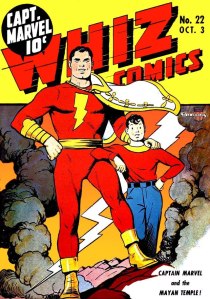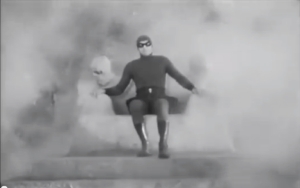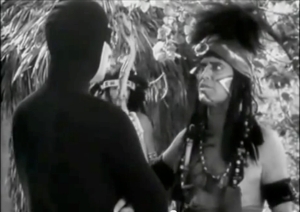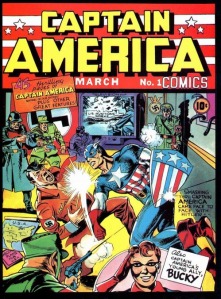
On the surface, the banker Favraux appears to have a charmed life. He is about to celebrate the engagement of his daughter, the widowed single mother Jacqueline, to the Marquis de la Rochefontaine. A widower himself, he has the attention of his grandson’s charming new governess, Marie Verdier. And he can rely on the loyal service of his right hand man, Vallieres. However, not all is as it seems: “Marie Verdier” is actually the career criminal Diana Monti, and with her partner Morales she schemes to take possession of Favraux’s fortune. The Marquis, heavily in debt, also sees Jacqueline as a route to enriching himself with the Favraux fortune and nothing more. As for Favraux himself, his past is about to catch up with him!
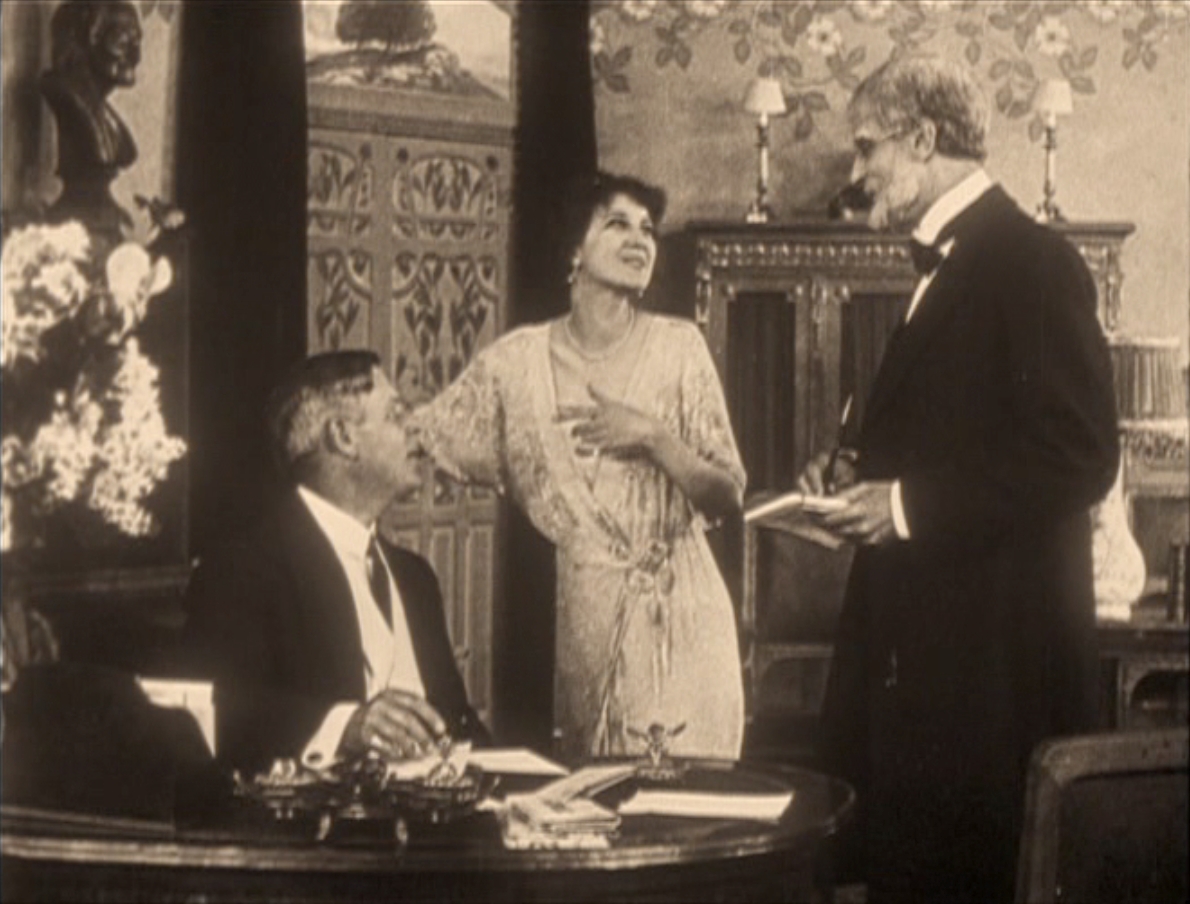
An old man, just released from a long imprisonment, appears at Favraux’s doorstep during a party celebrating Jacqueline’s engagement. Pierre Kerjean demands to speak to Favraux, for it was the banker’s bad advice and criminal involvement that led Kerjean to the manipulations for which he was jailed; his wife is dead and his son has turned to a life of crime under an assumed name. Favraux rejects Kerjean, saying, “If you have any claims to make, bring them before a judge.” Later, adding injury to insult, the banker runs over the old man with his car on his way to Paris. As of yet, nothing can touch Favraux’s complacency.

All of that changes when Favraux receives a message: for the crimes upon which he built his fortune (including stock manipulation and promoting false prospects, the results of which claimed many direct and indirect victims), the banker is to donate half his wealth to the Public Assistance Bureau or face the consequences. The note is signed “Judex” (Latin for “judge”) and gives Favraux a deadline of 10 pm the following night. Favraux calls in his regular detective, but finds that the agency has been taken over by the deceased detective’s nephew, Cocantin, who is at best inexperienced and at worst a bumbler. Cocantin does his best, but he only manages to spy Favraux and the governess meeting in secret. At Jacqueline’s engagement dinner, as the clock strikes ten, Favraux drinks a toast and immediately falls dead.

Who was responsible? Is Kerjean the mysterious “Judex,” or is it someone yet unseen? Should Cocantin reveal the anonymous threats to Jacqueline, who now stands to inherit the Favraux fortune? There are many twists and turns yet to unfold before the mystery is solved, and many parties with conflicting interests in the outcome, but the stage is set by the end of this Prologue to the 1916 silent serial Judex, written (with Arthur Benède) and directed by Louis Feuillade!

Following her father’s death, Jacqueline learns the truth about her inheritance, tainted by Favraux’s many crimes. She donates the entire sum to the Public Assistance Bureau and moves out of Les Sablons, the family estate, taking up a humble position as a piano teacher under an assumed name while her son lives with his former nursemaid in the country. Her fiancé, Rochefontaine, breaks their engagement, as he was only interested in her fortune. Before she leaves Les Sablons for the last time, the telephone rings: she hears her father’s voice, asking for her forgiveness! Has she gone mad, or could it be that Favraux lives?

Yes, as Diana Monti and her gang discover when they become suspicious and open his coffin, Favraux is not actually dead! Poisoned with an elixir that mimicked death, he was removed from his grave by the one and only Judex (and his brother . . . Roger) and is secretly held in a chamber beneath the Château-Rouge (the “red castle,” the outdoor shots of which are memorably tinted blood-red).

Judex (played by René Cresté), when we see him, is a tall, lean-faced figure in a hat and cloak: unlike Fantômas, Judex has no need to cover his face, as he is a stranger to anyone he might encounter, or so it seems. Like many of the literary proto-superheroes he resembles, Judex shows mastery of a range of scientific skills and has seemingly supernatural ways of knowing his enemies’ movements and secrets, in addition to the bravery and strength we would expect of such a character. His high-tech lair (behind a secret entrance, of course) is the most fantastical conceit in this serial, and it is quite forward-thinking for 1916: Favraux’s cell is equipped with a mirror through which he can be surveilled, mounted on a fixture that moves so that there is nowhere in his cell that he cannot be seen (the mirror looks startlingly like a modern flat-screen television: recall the connection between television and fantasies of long-distance viewing even in later serials).

The mirror can also display writing in “letters of fire” entered on a typewriter-like console so that Judex can send messages to his prisoner. (The Turner Classic Movies restoration I watched uses plain block lettering to recreate these messages in English, just as the letters and other documents shown in the film are rendered in English. Frankly, the lettering looks kind of bad, like something your local TV station would slap on a car commercial–I would rather see the original image, if it is still extant, with subtitles added, but other than this impressionistic poster I am unable to turn up a picture of what the “letters of fire” originally looked like.)
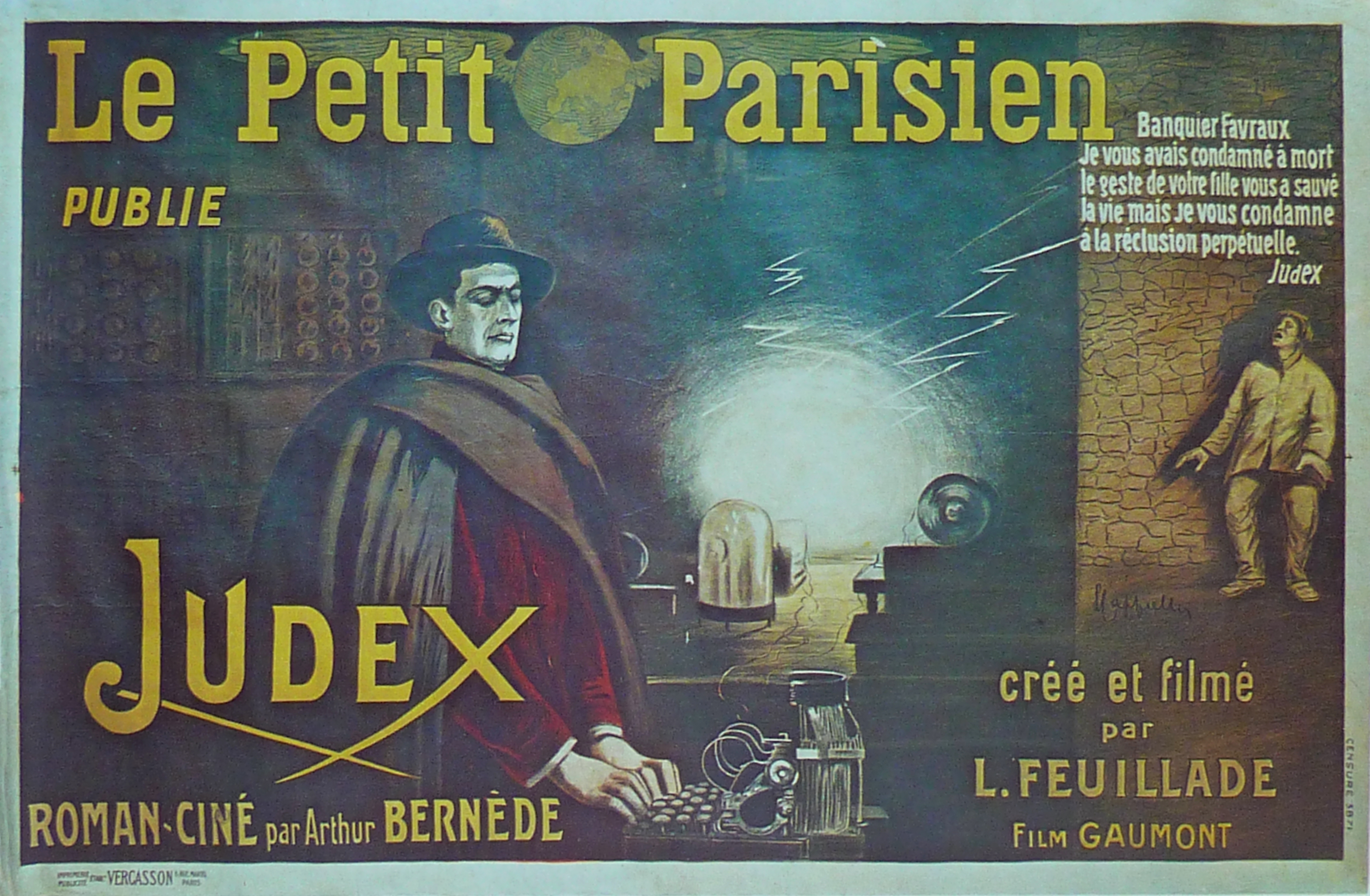
Judex’s heroism is ambiguous (he is “a terribly calculating and cruel righter of wrongs,” in Georges Franju’s words): we first encounter him threatening and then kidnapping Favraux, but he also keeps a watchful eye on Jacqueline. Seeing her give up her fortune, Judex commutes Favraux’s sentence from death to life imprisonment. The loss of Favraux’s fortune spoils the plans of more than one character, and Jacqueline is newly vulnerable as a working parent of limited means. Once events (largely set in motion by Diana Monti) endanger Jacqueline, Judex appears on the scene, rescuing and protecting her. It is several chapters before we learn who Judex is–he is secretly someone quite close to Jacqueline, in disguise, and has fallen in love with her–and more before we learn his motivation, revealed in flashback: while he and his brother Roger were boys, their father, a wealthy count, was ruined financially by Favraux’s stock manipulation. He committed suicide, just minutes before a messenger arrived with news of a gold mine strike that would revive the family’s fortune (as with many superheroes, Judex’s real superpower is his wealth). Their mother set her sons on a mission of revenge against Favraux, a mission that would take until their adulthood to conclude. But Jacqueline remains ignorant of these developments, and we see Judex live a double life, unable to tell her the truth about the man whose name–Judex–she has come to hate, even as she recognizes her father’s corruption: classic alter-ego business.

As the follow-up to the successful Les Vampires, Judex includes many Feuillade regulars in the cast, as well as themes and set pieces familiar from Les Vampires and the earlier Fantômas films. Masks and disguise continue to play a central role, even if the treatment is generally more down to earth than in the earlier films. Favraux is played by Louis Leubas, who played Satanas in Les Vampires; Roger, Judex’s brother, is played by Édouard Mathé, the hero of the earlier serial; Cocantin is played by Marcel Lévesque, Les Vampires’ Mazamette; and Diana Monti is played by Musidora, given an even larger role here than that of Irma Vep. Another member of the Feuillade repertory company, René Poyen, star of the popular “Bout de Zan” series, also appears as the “Licorice Kid,” a streetwise urchin who befriends Jacqueline’s son Jean (played by the painfully adorable Olinda Mano); unlike in Les Vampires, Poyen doesn’t just guest star–once he appears in Chapter Two, he’s in it for the long haul and has a complete arc.

In fact, almost everyone in this serial has a complex role and subplots of their own, distinguishing Judex from both the earlier Feuillade serials and contemporary action serials: the chapters, while still episodic, and usually centered around a single incident (Jacqueline is abducted; little Jean runs away to Paris; etc.), serve to advance the plot through the characters’ development and their relationships with each other rather than by running them through a gauntlet of action-adventure set pieces (chases, perils, stunts, etc.). Judex still contains many of those features, and is very entertaining from that perspective, but it is not primarily driven by cliffhangers. Rather, most chapters end with an open-ended rhetorical question (Should Cocantin reveal the threats against Favraux? Who is Judex?) or a simple “To be continued,” and it complicates the simple good vs. evil narrative by integrating those questions into a story in which justice is ultimately tempered with mercy. (The last chapter is titled “Love’s Forgiveness,” not “Judex Gives the Bad Guys What-For.”) Diana Monti is the only purely wicked character (“Forever a Delilah!” the title card reads at one point, when she draws Morales back into their scheme after he has had second thoughts), but everyone else, including Judex, occupies a moral landscape with shades of gray.

One could imagine a contemporary American serial like The Perils of Pauline focused on getting Jacqueline into and out of danger: first she loses her father to an unknown assailant, then is abducted by outlaws, and so forth; an action serial of the 1930s might have presented Cocantin, straight-faced, as the protagonist, solving the mystery of Favraux’s apparent death while tangling with Diana Monti and the mysterious Judex, perhaps learning that Judex is on his side only in the last chapter; finally, anytime after the 1940s, we might have had a film with Judex himself at the center, either in the manner of pulp heroes like the Shadow or as a costumed superhero. The serial Feuillade made is more complicated than any one of those, however: it contains strands of all of them, woven together such that no one strand could carry the tale’s full complexity. With its humanist emphasis on individual character and sensitive probing of the motives and morality of revenge, and its shifts of perspective between multiple characters’ viewpoints, Judex is ultimately novelistic, even epic, a tale of multi-generational reconciliation in the vein of Victor Hugo despite its pulpy trappings.

Judex has been described as a return to the countryside for Feuillade after the intense urbanism of Les Vampires, and that is true: along with the leisurely pace, the nostalgic return to old, forgotten places such as Kerjean’s abandoned mill and the empty halls of Les Sablons after Favraux’s apparent death cement the impression of a Romantic novel brought to life, complete with digressions, back stories for many of the characters, and bits of character business worthy of Dickens (the secretary of the detective agency still mourning his late employer with his oversized handkerchief, for example). The few turns toward the city are presented in a rosy light: even a child can feel safe alone on the streets of Paris, and the Licorice Kid’s repertoire of street skills extends to cadging produce from stalls and hitching rides on the back of taxis, nothing more. Diana Monti and Morales meet in a cozy café rather than the frenetic dance hall environment of Irma Vep’s Howling Cat.

Feuillade’s cinematic language is also more naturalistic in Judex, or perhaps it just seems so from this vantage because it is more modern; ironically, more frequent cutting within scenes allows for them to be extended and contributes to a relaxed rhythm, and the use of close-ups and medium shots allow the actors to play their roles with greater subtlety and project their emotions to each other rather than to the camera; there is very little of the mugging toward the audience that can be seen in the Fantômas films and in Les Vampires. Self-reflexive images of the cinema itself (a favorite device in the other Feuillade films I’ve seen) are absent, although many shots are framed through doorways or arches, creating a proscenium effect; the sparing use of special effects is limited to Judex’s lair, a sort of magical space where Feuillade still feels free to play around.

Ultimately, at least based on first impressions, I preferred the arch, urban modernism of Les Vampires to the pastoral sentiment of Judex, but that is a matter of personal taste. And in the long run one could argue that Judex, with its tortured antihero, has had a greater influence, anticipating many later superhero stories. Of course, there’s the whole brooding loner thing, with the hero using his wealth to strike at the criminal element from his secret underground lair, avenging the death of a parent while adopting a fearsome public persona, because God forbid we get through one of these columns without mentioning Batman. But Batman shares many of the characteristics of Judex–making up in wealth, scientific ingenuity, and mastery of disguise what he lacks in actual superpowers–with other heroes of the pulp era, so it’s not necessary to draw a direct line. (It’s also worth noting that, with a few exceptions, Judex rarely resorts to direct violence in this serial: his force is that of applying pressure discreetly and making things happen.)

The case for influence is clearer when looking at Sam Raimi’s Darkman and Alan Moore and David Lloyd’s V for Vendetta. In both cases (leaving aside some obvious visual similarities), a wounded loner relies on disguise and secrecy to protect the woman he loves from a larger threat, in the case of V even keeping her in a kind of protective custody, as Judex does in a late chapter of this serial (V for Vendetta obviously complicates this formula quite a bit and calls its hero’s methods into question, but like much of Moore’s work it is fair to call it a deconstruction, and I suspect Judex is one of the many influences drawn from). A strong strain of the nineteenth-century novel tradition is the Gothic, and Judex, with its secret conspiracies, crumbling castle, characters haunted (even cursed) by the sins of the previous generation, and scenes of captivity and escape, provided one blueprint for adapting its themes to motion pictures, even if ultimately people were more influenced by the hat and cape.

What I Watched: Judex (Gaumont, 1916)
Where I Watched It: Flicker Alley’s 2-DVD set from 2004. In addition to restoring the film, this version includes a new score for full orchestra by composer Robert Israel, drawing themes from compositions by Charles-Valentin Alkan and others, as well as original music. Israel’s theme for Diana Monti is particularly juicy, like something from Kurt Weill’s Threepenny Opera score.

No. of Chapters: 12 chapters of varying length, plus a Prologue and Epilogue
Best Chapter Title: “The Fantastic Dog Pack” (Chapter Three), in addition to having the best chapter title, is also the most purely fun episode in the serial. Jacqueline had been abducted by Diana Monti and Morales in the previous chapter, a plight Judex only discovered by the happy accident of the release of a pair of homing pigeons he had given to Jacqueline in case of trouble. Arriving at her apartment and finding her missing, he quickly puts his dog on the scent and leads a pack of hounds to the villa where Jacqueline is being held.

As soon as the unknowing concierge opens the gate, the dogs rush in and flush out the outlaws, who escape through a hidden tunnel. Judex doesn’t bother following them, focusing on Jacqueline’s safety, but Diana and Morales are soon met by a poodle on its hind legs, carrying a warning from Judex to leave Jacqueline alone or suffer her father’s fate: the world’s cutest death threat.

Best Peril: While Judex is not constructed purely around stunts and spectacle, there are several sequences of action and danger, and most chapters finds either Jacqueline, her son, or Judex himself in a scrape from which they must be rescued or get themselves out of trouble. The most complex set piece is the struggle aboard the Eaglet in Chapter Eleven (“The Water Goddess”). Judex is taken by boat to Diana Monti’s ship to plead his case to Favraux: give up and return with Judex to his house, where Favraux’s daughter and grandson are safe. After an argument, Judex is taken by surprise and bound to a pole, a hood covering his face. Diana and Morales step outside the room and plot to kill Judex later. Little do they know, however, that Daisy Torp, Cocantin’s former fiancée (and a character who enters the film quite late), has swum out to the ship and has seen the whole thing through a porthole. Sneaking onto the ship, she unties Judex so that when Morales checks on him, he turns the table on him and ties him up in his place. When Diana has her gang throw the still tied and hooded victim overboard, she has no idea that she has just sentenced her partner in crime to death . . . until Judex appears to confront her!

Sample Dialogue: “I am the former owner of this house and you will not tarnish it with crime, as sure as my name is Pierre Kerjean!” –Chapter Five, “The Tragic Mill”

Judex Sallies Forth: Louis Feuillade made a sequel to Judex the following year, The New Mission of Judex. It is still extant, and I’ll write about it if I can track down a copy. A 1934 remake was directed by Maurice Champreux; I haven’t seen it, either.

In 1963, director Georges Franju remade the serial as a highly personal feature film. Judex was rarely seen by then, so Franju’s film served as an homage to a past master and a reminder to the public of a hero who had once been fashionable to the point of mania. Franju’s version conveys most of the major plot points while condensing the story (Judex’s family back story is omitted), but it is really focused on atmosphere. It also nods to Les Vampires, having Diana Monti (played by Francine Bergé) wear Irma Vep’s black catsuit for several sequences, and introduces a few Felliniesque touches. I intend at some point to write about latter-day spoofs of and tributes to the serials, including Franju’s Judex, but my recent exploration of Feuillade has revealed to me just how much I still have to explore in that area, particularly the various modern Fantômas features.

What Others Have Said: “Oedipal complications abound. The banker Favraux’s daughter learns of her father’s treachery; Judex’s mother is an overbearing figure, intent on keeping the son focused on his oath to the father; the son of Kerjean betrays his father; the detective Cocantin constructs his own adoptive family. Indeed, the few figures doomed to die in Judex either have no visible family or have betrayed their familial relations. On the other hand, a villain can be redeemed because he loves his family.” –Jan-Christopher Horak, “Judex: An Introduction,” included in the Flicker Alley DVD release

What’s Next: Summer is over, but I still have one more serial to write about this year: Tailspin Tommy in the Great Air Mystery, which I will probably get to in November. As always, thanks for reading!



















































